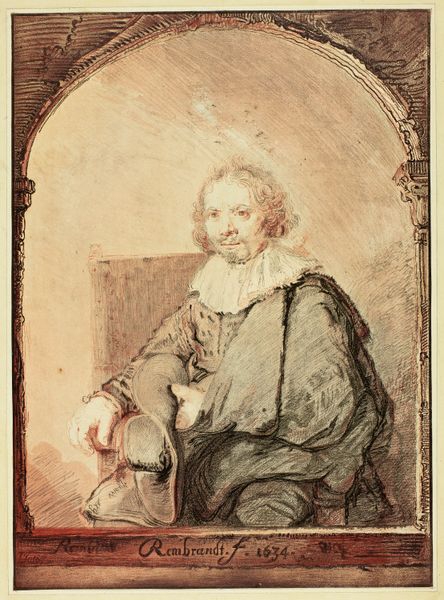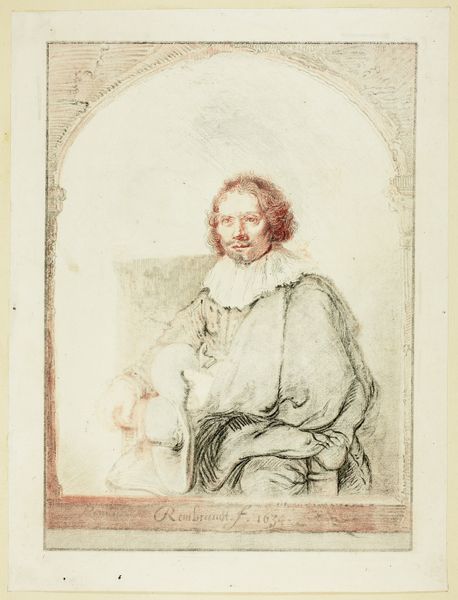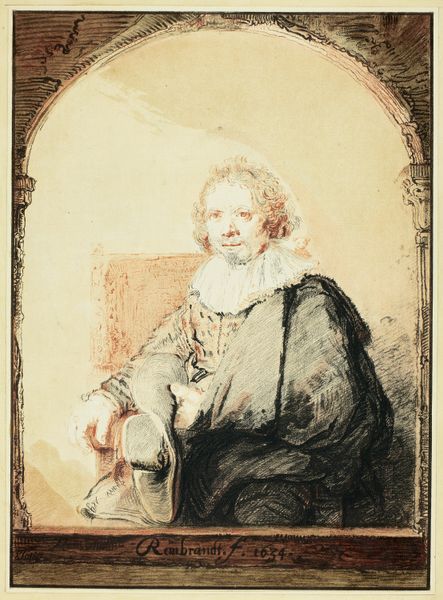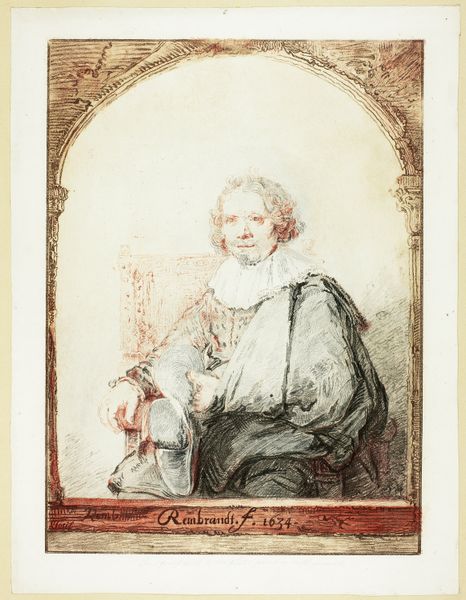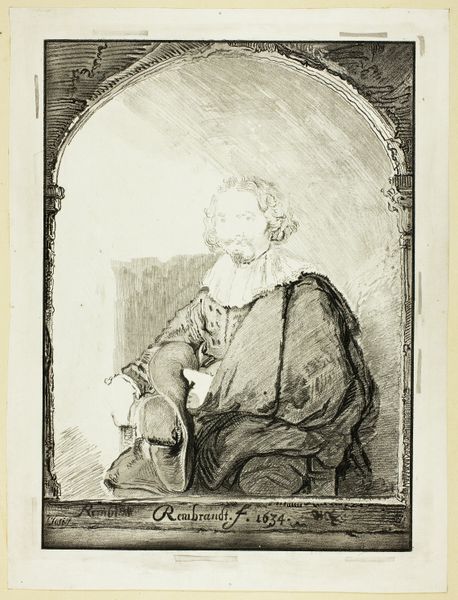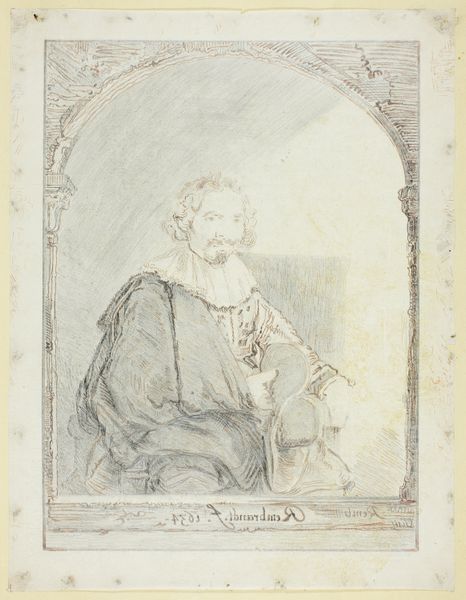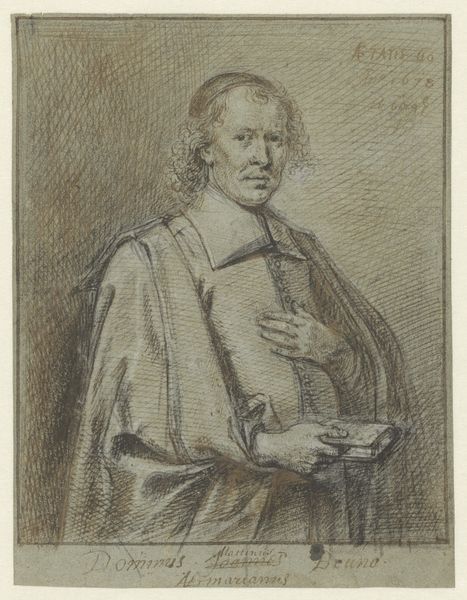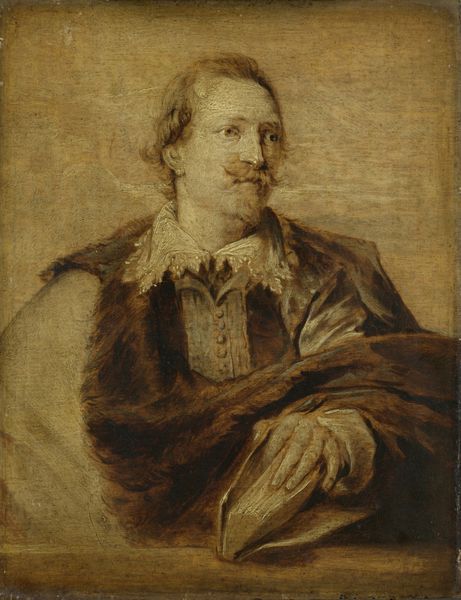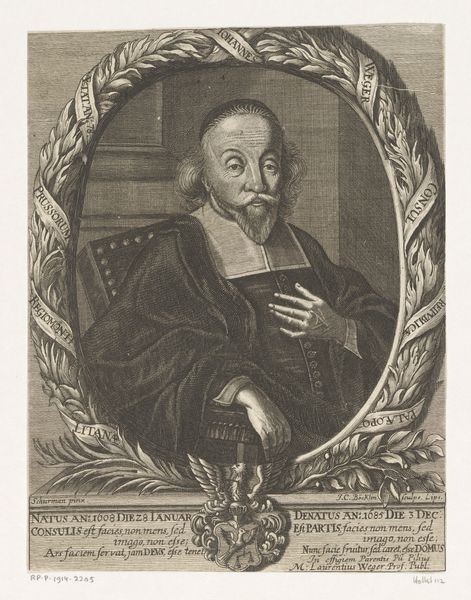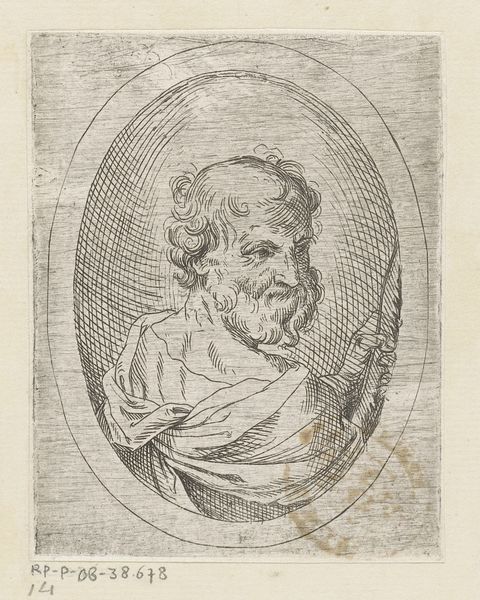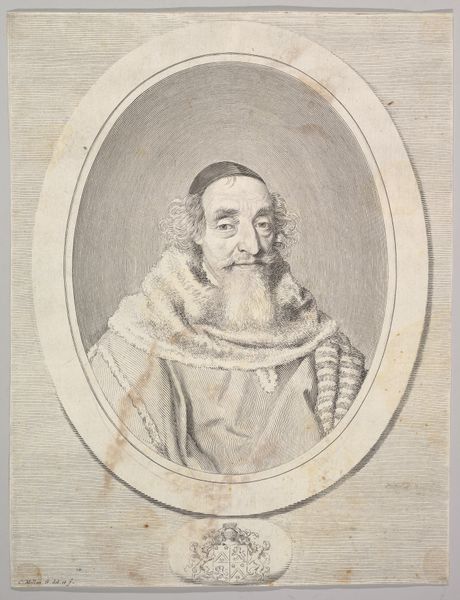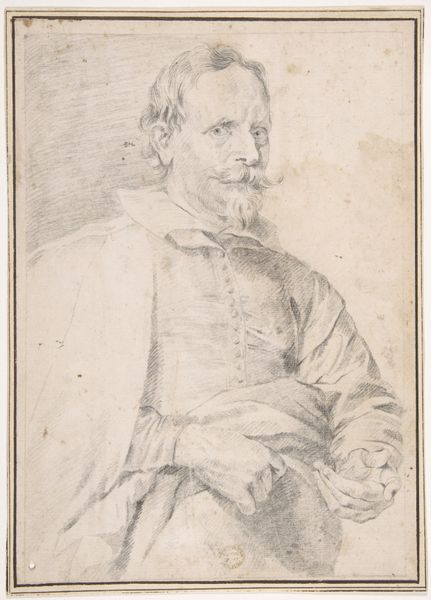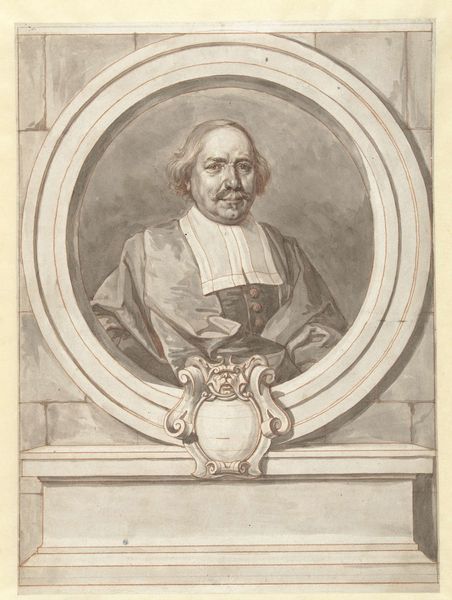
Portrait of a Man in an Arm Chair, from Collection d'imitations de Dessins d'après les Principaux Maîtres Hollandais et Flamands Possibly 1821
0:00
0:00
drawing, print, etching, paper
#
portrait
#
drawing
# print
#
etching
#
paper
Dimensions: 373 × 271 mm (image); 424 × 323 mm (sheet); 507 × 393 mm (secondary support)
Copyright: Public Domain
Editor: Here we have "Portrait of a Man in an Arm Chair" by Christian Josi, likely from 1821. It's a print made from etching on paper, currently residing at the Art Institute of Chicago. I find it captivating because of its texture – the lines seem so deliberately etched. How do you see the techniques influencing our understanding of this portrait? Curator: This piece provides a fascinating lens through which to examine the very means of artistic production in the 19th century. The fact that this is a print, an imitation of a drawing, is crucial. Consider the labor involved in creating the original, likely by a different artist from the credited "imitator", Christian Josi. And the further labour to produce prints accessible to a wider audience. Editor: That's an interesting point! It becomes less about the man in the chair, and more about the production and consumption of art. The drawing emulating other "masters". Curator: Precisely! It speaks to a specific moment in art history where the reproducibility of art was gaining traction. Etching allows for the mass production of images. It's almost a proto-photographic technology! It challenges the aura of uniqueness surrounding artwork. Editor: So, it's not just a portrait, but also a commentary on art itself? The social conditions that drive creation and consumption of images? Curator: Indeed. Think about who could afford an original drawing versus who could afford a print like this. It changes the audience and the very purpose of the artwork. Where does this copy sit among art, craft and industry? Is Josi attempting to capture and sell some cultural status, even as a printed copy of another's creation? Editor: I never considered the social and economic factors embedded in the creation of a "copy." This has made me rethink how I perceive prints, or even all reproductions. Thanks. Curator: You're welcome. Paying attention to the processes unveils hidden narratives about labor and materiality within seemingly simple artworks.
Comments
No comments
Be the first to comment and join the conversation on the ultimate creative platform.
